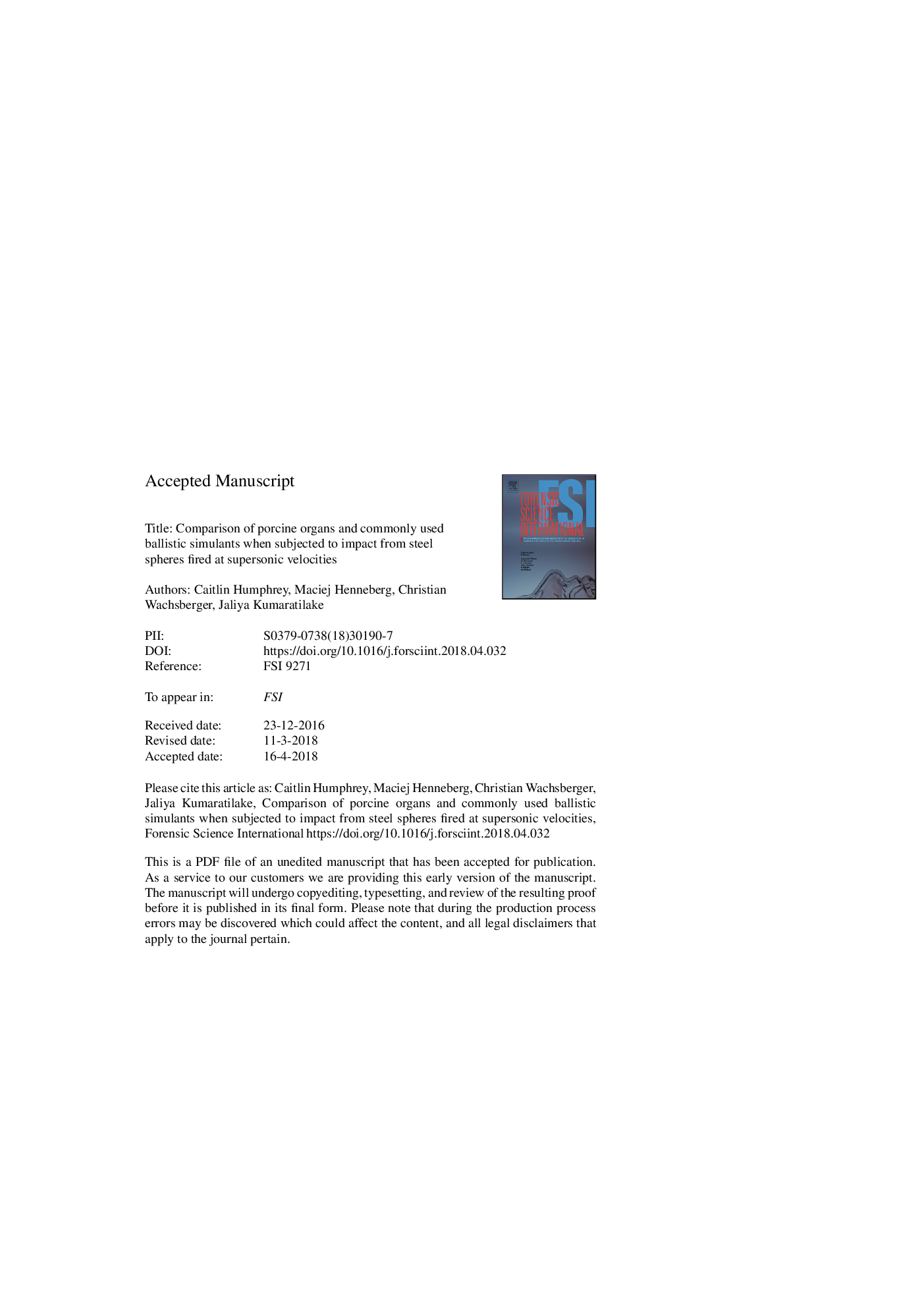| Article ID | Journal | Published Year | Pages | File Type |
|---|---|---|---|---|
| 6550928 | Forensic Science International | 2018 | 19 Pages |
Abstract
Firearm injuries are common in the world today, in both military and civilian settings. Research into the effects different ammunition has on the human body has been conducted using tissue simulants such as Ballistics Ordnance Gelatine. Previous research has found that with low velocity projectiles, the tissue simulants only represent a selected few organs, as the human body and its organs/tissues are not homogeneous. The aim of this research was to determine which ballistic simulants best represent the abdomen and thorax, for the purposes of anatomical modelling. A mounted firearm was used to fire specially made ammunition containing a sabot and steel spherical projectile at medium (â¼500Â m/s) and high (â¼900Â m/s) velocities. Test specimens of 50Â mm cube porcine tissues (lung, liver, kidney and heart) and ballistics simulants (20% and 10% Ballistics Gelatine and Clear Gel) were shot at and the energy loss determined using Doppler radar, optical infra-red sighting screens and high speed video. This study determined that the conclusions drawn from studies in these tissue simulants may not be an accurate representation of what occurs in human tissues and that different impact velocities produce differing results. New simulants are required to better represent the energy loss of a projectile through the organs of the abdomen and thorax and the results of this study may guide this development. Further experiments will be required to determine different concentrations of gelatine and their accuracy at representing the heterogeneous nature organs of the human body.
Keywords
Related Topics
Physical Sciences and Engineering
Chemistry
Analytical Chemistry
Authors
Caitlin Humphrey, Maciej Henneberg, Christian Wachsberger, Jaliya Kumaratilake,
